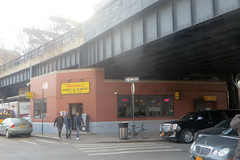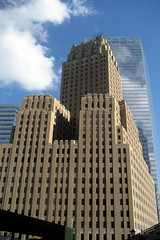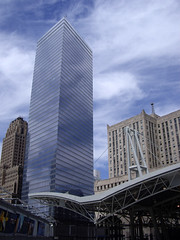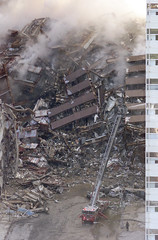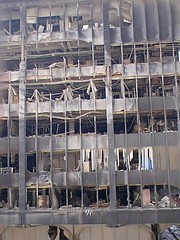West:The Standard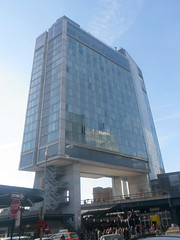
848 (corner): A 20-story
boutique hotel built in 2006 to straddle the High Line, then in the process of being transformed into a park. The hotel drew some
controversy when it was discovered to be a great place to be an exhibitionist.
High Line Park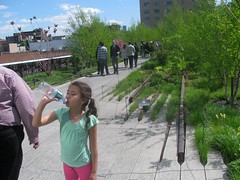
Running along the eastern edge of this block is a disused elevated railroad that was used to transport freight along the Westside waterfront, replacing the street-level tracks at 10th and 11th avenues that earned those roads the nickname "Death Avenue." Built in 1929 at a cost of $150 million (more than $2 billion in today's dollars), it originally stretched from 35th Street to St. John's Park Terminal, now the Holland Tunnel rotary. Partially torn down in 1960 and abandoned in 1980, it now stretches from Gansevoort almost to 34th--mostly running mid-block, so built to avoid dominating an avenue with an elevated platform. In its abandonment, the High Line became something of a natural wonder, overgrown with weeds and even trees, accessible only to those who risked trespassing on CSX Railroad property. In its abandonment, the High Line became something of a natural wonder, overgrown with weeds and even trees, accessible only to those who risk trespassing on CSX Railroad property. Activists saved the tracks from demolition and successfully advocated for it to be turned into a park, on the model of Paris' Promenade Plantée. Opened in 2009, the rail line was largely relandscaped using seeds from the wild plants that had colonized the tracks on their own. |
W
|
East:841: Was Diamond Meat Packers843 (corner): Ottomanelli, one of the last meat businesses 843A: R & W Pork Provisions--it
doesn't get more Meatpacking District than this.
835 (corner): Highline, a stylish three-story bar and restaurant "with a theme of luxury travel." Was the site of The Mineshaft, a hardcore gay sex club that opened in 1976 and was shut down in 1985 in the name of the AIDS epidemic. Freddie Mercury wears a Mineshaft T-shirt in the video for Queen's "Don't Stop Me Now." In the 1960s, a gay disco called The Fawn was here. |
